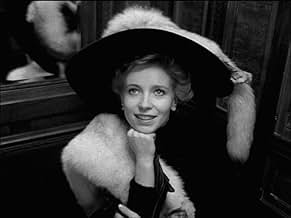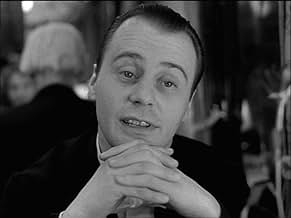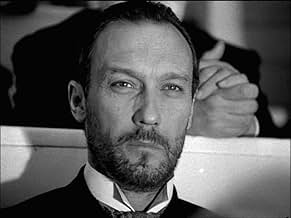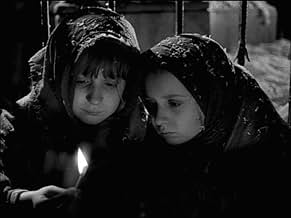IMDb RATING
7.0/10
2.1K
YOUR RATING
Two twin sisters, who grew up separately, Dóra, a pseudo-aristocrat, and Lili, an anarchist bomber, are reunited through Z, a mysterious traveller of the luxurious Orient-Express.Two twin sisters, who grew up separately, Dóra, a pseudo-aristocrat, and Lili, an anarchist bomber, are reunited through Z, a mysterious traveller of the luxurious Orient-Express.Two twin sisters, who grew up separately, Dóra, a pseudo-aristocrat, and Lili, an anarchist bomber, are reunited through Z, a mysterious traveller of the luxurious Orient-Express.
- Awards
- 1 win
- Director
- Writer
- All cast & crew
- Production, box office & more at IMDbPro
Storyline
Did you know
- TriviaVoted as one of the "12 Best Hungarian Films" ("New Budapest 12") by Hungarian filmmakers and critics in 2000.
- GoofsThe film takes place around 1900. In the projection room scene, among Méliès' films, there is an extract from "The General" by Buster Keaton which was shot in 1926. That is 26 years later.
- ConnectionsFeatured in Final Cut: Ladies and Gentlemen (2012)
- SoundtracksMacbeth, Act 3: Coro e ballabile
Ondine e silfidi""
Written by Giuseppe Verdi
Performed by Andrea Mate, Budapest Symphony Orchestra, Hungarian Radio and Television Chorus, Istvan Gati, Janos Bandi, Janos Tóth, Katalin Pitti, Kolos Kováts, Lamberto Gardelli, Mária Zádori, Peter Kelen, Piero Cappuccilli, Sylvia Sass, Tamás Bátor
Featured review
In My Twentieth Century, the world begins to move electrically - dramatically, beautifully shown in electric dance costumes, marching bands and mirrored halls, spurred by a sad-faced (I really liked his face) actor as Edison, intoning toward the end that As god is magnificent for his creation, man is magnificent in learning how to harness it (not quite the line, but best I can do).
Meanwhile, twin orphan girls fall asleep, like the match girl in the Andersen story, hoping a lighted match will warm them on a snowy eve. Stars and a miraculous donkey lead well-dressed men to carry them to safety but in separate directions of compass and life. Later, one of them, now a poor anarchist, drops her copy of Kropotkin's "Mutual Aid" in the snow where a man finds it, reads it's message of cooperation and play among animals (in great distinction to the then popular capitalist theory of 'social darwinism' - "survival of the fittest" and "red in tooth and claw") through the night and becomes entwined in the narrative as he meets one of the young women and then the other, none of them knowing of the twin presence.
Kropotkin's observations, while brought in by a revolutionary, seemed to be the narrative of a playful counterpoint to the technologically modern world. I didn't see his words used as narrative as a turning back so much as a development that goes arm in arm with the other. His observations of rabbits "so drunk with play" they lack "fear of the fox" are juxtaposed with scenes of the man and the young women as they tryst happily and alternately take offense. While the anarchist seemed put off by the man's brusque manner (he had justifiably mistaken her for the more libidinous sister) the affairs seemed modern and innocent in consequence - no french lieutenant's woman fate, no scarlet letter. While Edison prepares to send a message by wire around the world, the young women and their man unite (it's vague but...) and wake to scenes of white pigeons in flight also carrying messages. Edison even confronts one before sending his own message.
Meanwhile, twin orphan girls fall asleep, like the match girl in the Andersen story, hoping a lighted match will warm them on a snowy eve. Stars and a miraculous donkey lead well-dressed men to carry them to safety but in separate directions of compass and life. Later, one of them, now a poor anarchist, drops her copy of Kropotkin's "Mutual Aid" in the snow where a man finds it, reads it's message of cooperation and play among animals (in great distinction to the then popular capitalist theory of 'social darwinism' - "survival of the fittest" and "red in tooth and claw") through the night and becomes entwined in the narrative as he meets one of the young women and then the other, none of them knowing of the twin presence.
Kropotkin's observations, while brought in by a revolutionary, seemed to be the narrative of a playful counterpoint to the technologically modern world. I didn't see his words used as narrative as a turning back so much as a development that goes arm in arm with the other. His observations of rabbits "so drunk with play" they lack "fear of the fox" are juxtaposed with scenes of the man and the young women as they tryst happily and alternately take offense. While the anarchist seemed put off by the man's brusque manner (he had justifiably mistaken her for the more libidinous sister) the affairs seemed modern and innocent in consequence - no french lieutenant's woman fate, no scarlet letter. While Edison prepares to send a message by wire around the world, the young women and their man unite (it's vague but...) and wake to scenes of white pigeons in flight also carrying messages. Edison even confronts one before sending his own message.
- Charlie-209
- Sep 9, 2002
- Permalink
- How long is My Twentieth Century?Powered by Alexa
Details
Box office
- Gross US & Canada
- $682,016
- Runtime1 hour 44 minutes
- Color
- Sound mix
- Aspect ratio
- 1.33 : 1
Contribute to this page
Suggest an edit or add missing content




























